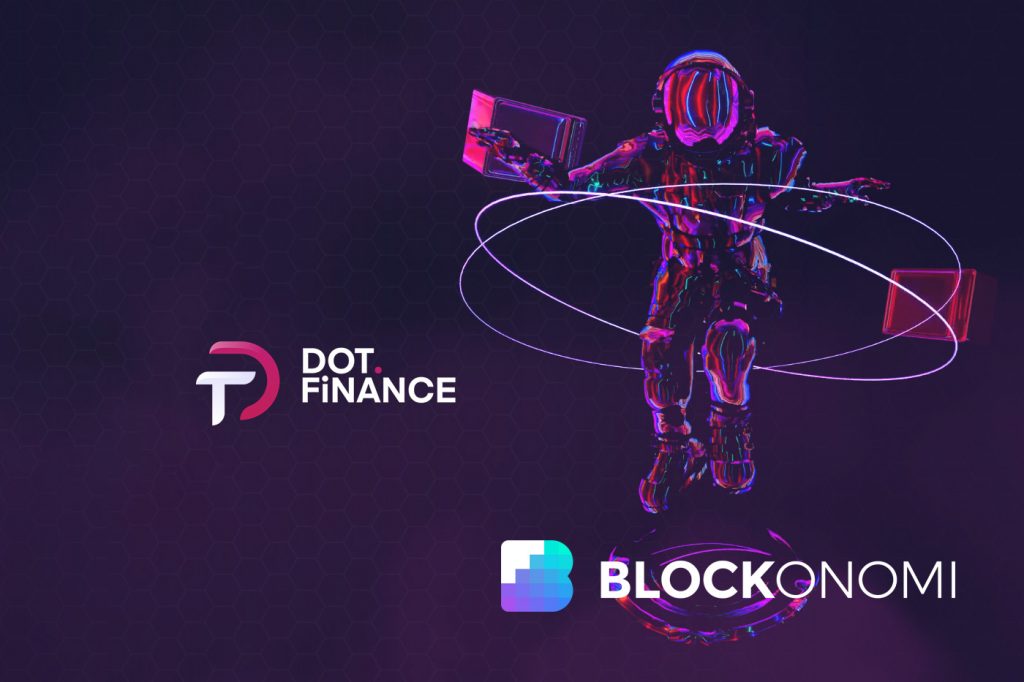Dot.Finance is a DeFi-powered platform designed to promote the development of the Polkadot ecosystem.
It features a suite of products that offer investors access to a wide array of high-performance financial tools, enabling the best use of their digital assets through non-manual techniques that offer effective compounding interest.
What Can Dot.Finance Do?
The team at Dot.Finance is focusing on spotlighting the Polkadot ecosystem and its advantages foir many different kinds of users.
This will help leverage the adoption not only of Polkadot but also services that Dot.Finance is building on top of Polkadot’s secure, reliable, and resilient architecture.
The project stands out in different ways but two key factors have stolen the show.
First, the team behind Dot.Finance includes well-known names in the DeFi area. They have already gained achievements through other projects and their extensive background in DeFi. Second, the team completely trusts in the potential of Dot.Finance.
They have reinvested the team token’s allocation into other projects. So in other words, they will get zero benefit in case the business model doesn’t reach their goals.
In addition to the attention on Polkadot, the project is also aimed at raising several million dollars in Liquidity farming for Dot.Finance, and to grow overall adoption of the project in the DeFi community.
Each member of the team has an extensive background and in-depth knowledge in the industry.
Bancor, Poolz and Spaceship Dealers are all Israeli crypto industry superstars who have a lot of influence in the DeFi sector.
For Polkadot Network DeFi tools, they joined forces to combine unique DeFi mechanisms with secure code and an intuitive user interface. Despite being a new project, the platform has already shown signs of progress in terms of attracting partners and funding.

Why Dot.Finance?
The bloom of DeFi projects represent the results of crypto space’s recent events and growth.
This has led to the arrival of new blockchain-based financial services solutions, such as yield farming and staking. These solutions held out the promise of maximizing investor’s use of tokens and assets, through the lending ability and rewards.
Projects like Pancakeswap have been very successful because BSC provides better platforms for DeFi development than Ethereum, with lower gas fees as the best point.
These fundamentals have created fertile ground for many other popular projects on BSC designed to grow the ecosystem through their tokens.
Currently, several ecosystem platforms are incentivizing work on blockchain smart contracts. However, despite the recent boom, DeFi is still in its infancy on the Polkadot network. Dot.Finance was developed to fill this gap.
Regarding Polkadot, it is a very successful blockchain protocol designed to connect multiple specialized blockchains into a unified network.
Separate blockchains can only handle a finite amount of traffic, and all blockchains are balanced to support a wide variety of features and use cases. Simply put, one blockchain might optimize for security, while another might optimize for speed.
Dot.Finance is building around the Polkadot network and targets liquidity pools, staking functionality, and related DeFi products. Dot.Finance is designed to bring DeFi to a wide range of users and will help increase users’ exposure to multiple benefits of the Polkadot ecosystem.
With a specific focus on Polkadot, Dot.Finance will combine powerful DeFi solutions with Polkadot’s out-of-the-box architecture to open the door to financial services innovations that can benefit everyone.

Highlighted Features and Core Products
PINK token is a governance token with additional utility, issued by Dot. Finance. Through the use of DAO governance protocols, members will be able to submit on-off-chain proposals and vote on future Dot.Finance protocols.
The token is also used for incentivizing purpose and return increasing. As well as earning WBNB when staked, the PINK token can be used to increase APR when claiming profits.
The fee structure for PINK is as follows:
Asfor “performance fee,” 30% of the profits from withdrawals will be switched to PINK tokens. Participants in the PINK staking farm are rewarded with the original BNB earnings.
If the user withdraws funds within 72 hours of deposit, there is a 0.5% withdrawal fee. This also contributes to platform stability.
Tokenomics:
- Ticker: PINK
- Blockchain: Binance Smart Chain
- Token Standard: BEP-20
- Token Type: Utility, Governance
- Total Supply: 500,000,000 PINK
- Starting supply: 100,000,000
- No cap on supply; rather, PINK tokens are minted for every 1 BNB earned in performance fees
- Circulation Supply on TGE: 4.43%
- Initial Market Cap: $443,333 USD
Token Allocation
- Liquidity : 15%
- Ecosystem development: 18%
- Private and Public Sale: 25%
- Marketing Purpose: 5%
- Project development team: 14%
- Advisor: 5%
- Staking: 18%
Yield Farming
Yield farming is not a new concept, but it can be remarkably complicated. Performing it correctly can be lucrative, but it is prone to errors or missing a window, which can decrease the chance for profit. However, picking the best “deals” and moving the funds without risking return-killing gas fees can be daunting.
Dot.Finance addressed these concerns by integrating the auto-compounding protocol to simplify the process and minimize the need to move from deals to deals.
The smart contracts’ role is to optimize the compound returns and distribute fees across farms. This enables Dot.Finance users to benefit from their intelligent algorithms deployed. And what is more exciting? They can do so at lower rates, which hardly occurs if doing it on their own.
Vaults
Motivated by the successful performance of PancakeSwap, Dot.Finance however approached and chose to buckle down the toughest parts: the manual conversions and re-staking that farmers have to make. The solution is the auto-compound set on.
The Dot.Finance yield aggregator applies this function to users’ CAKE yields by swapping them to LP tokens and then staking them.
It helps to optimize the yield farming activities of projects in the ecosystem. Users can get a share of the performance fee through this passive-investing strategy.
Polkadot Index
Polkadot Index pools are AMMs (automatic market makers) for various asset classes. Polkadot Index pool has the role of tracking projects in the Polkadot ecosystem.
This product of Dot Finance has a similar way of working with ETFs, as it allows users to own a single Index token but still have exposure to many assets of the Polkadot ecosystem.
Staking
Pink owners can engage in a PINK stake farm, which allows them to earn a share of the profits generated by PINK Distribution. The profits come from the vault’s performance fees, which are 30% of the yields on withdrawals exchanged to freshly minted PINK tokens. In this case, the BNB was switched to PINK as part of the 30% performance fee.
Notable Milestones and Roadmap
Being a fresh face, Dot.Finance has reached some notable milestones that others projects wish for. 33% of our PINK token was already staked. The project successfully raised $1.5M and attracted over ten major investors’ participation.
Some of these names include LC Capital, Master Ventures, AU21 Capital, Faculty Group, Efficient Frontier, GBV, MXC, Zokyo Ventures, Kyros Ventures, Carl the Moon, Boxmining and Ran Neuner.
Dot.Finance nailed their debut with x20 public price and x30 private price on their first day. This marked a notable milestone of the project as the market closed down as a whole in that period. Plus, Zokyo completed a successful audit and further audits are expected in the coming future.
After the launch of Dot.Finance platform and yield aggregator, the team heads to expand the ecosystem through forming strategic cooperation with partners and to launch the governance model.
Launching Polkadot DEX Aggregator and IL Guar function is scheduled at the final quarter of this year.
To learn more about Dot.Finance, just click here to visit its website!
The post Dot.Finance: Bringing Compound Yield Farming to the Masses appeared first on Blockonomi.





















